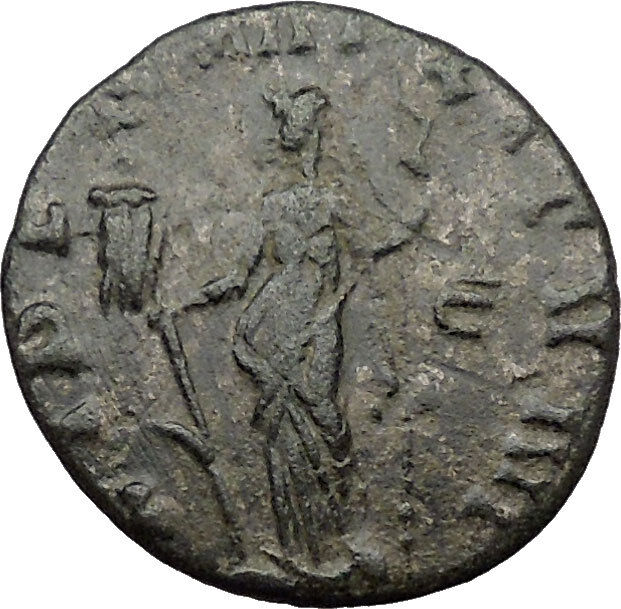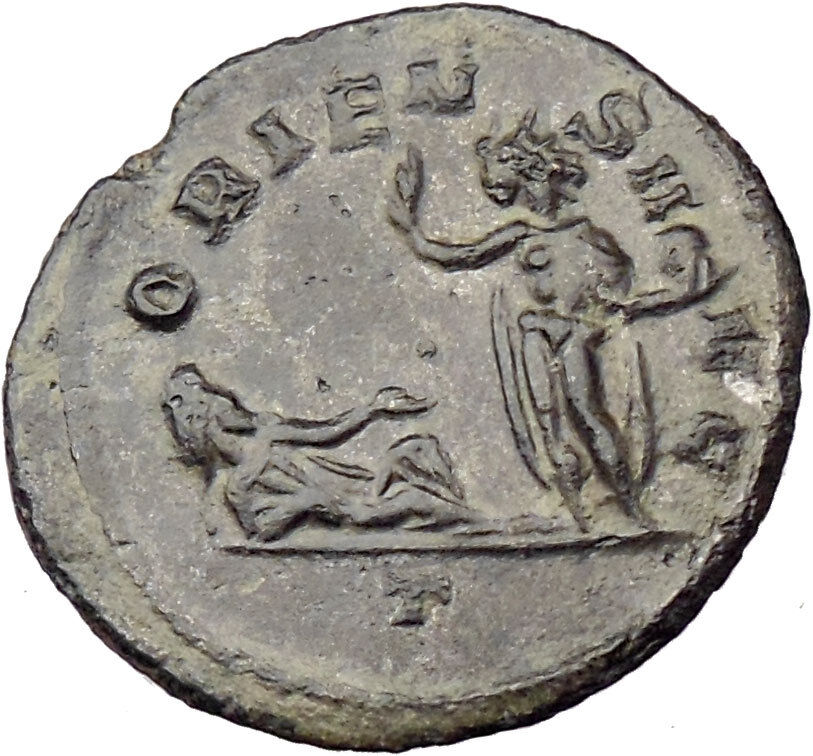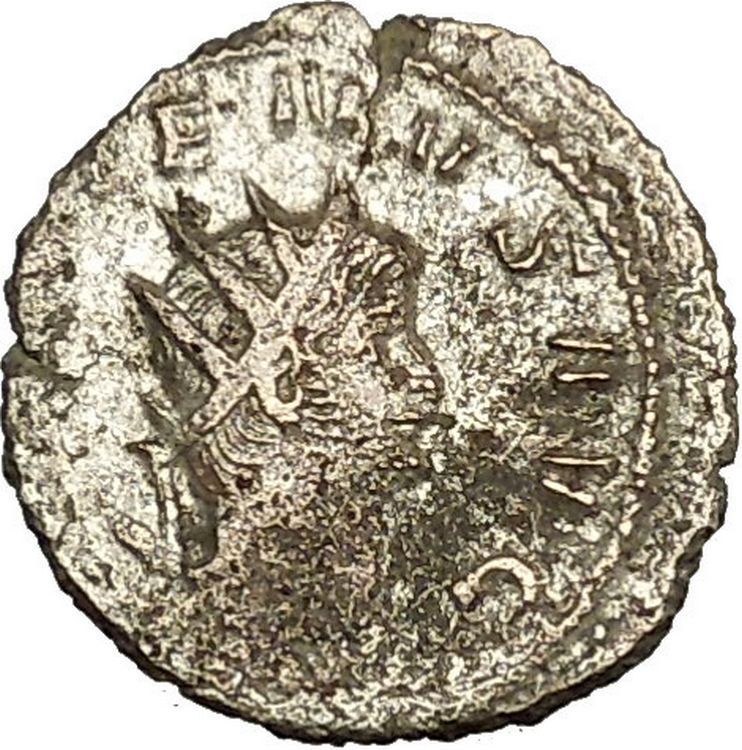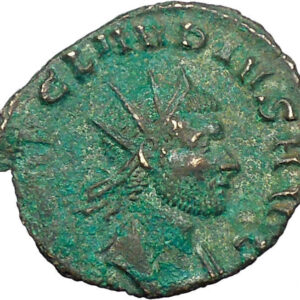|
Philip
I ‘the Arab’ –
Roman Emperor
: 244-249 A.D. –
Silver Antoninianus 22mm (4.18 grams) Struck at the mint of Rome 245 A.D.
Reference: RIC 2b
IMPMIVLPHILIPPVSAVG – Radiate, draped and cuirassed bust right.
PMTRPIICOSPP – Philip seated left on curule seat , holding globe and scepter.
Ruling dynasties often exploit pomp and ceremony with the use
of regalia
:
crowns
,
robes,
orb (globe) and
scepters
You are bidding on the exact item pictured,
provided with a Certificate of Authenticity and Lifetime Guarantee of
Authenticity.
In the
Roman Republic
, and later the Empire, the
curule seat (sella curulis, supposedly from currus,
“chariot”) was the chair upon which senior magistrates or promagistrates owning
imperium
were entitled to sit, including
dictators
,
masters of the horse
,
consuls
,
praetors
,
censors
, and the
curule aediles
. Additionally, the
Flamen
of
Jupiter
(Flamen Dialis) was also allowed to sit
on a sella curulis,though this position lacked imperium.
According to Livy
the curule seat, like the
Roman toga, originated in
Etruria
, and it has been used on surviving
Etruscan monuments to identify magistrates, but much earlier stools supported on
a cross-frame are known from the
New Kingdom of Egypt
. According to
Cassius Dio
, early in 44 BC a senate decree
granted
Julius Caesar
the sella curulis
everywhere except in the theatre, where his
gilded
chair and jeweled crown were carried in,
putting him on a par with the gods. As a form of
throne
, the sella might be given as an
honor to foreign kings recognized formally as friend (amicus) by the
Roman people
or
senate
.
The curule chair is used on Roman medals as well as funerary monuments to
express a curule magistracy; when traversed by a
hasta
(spear), it is the symbol of
Juno
.
The curule chair was traditionally made of or veneered with
ivory
, with curved legs forming a wide X; it
had no back, and low arms. Although often of luxurious construction, the Roman
curule was meant to be uncomfortable to sit on for long periods of time, the
double symbolism being that the official was expected to carry out his public
function in an efficient and timely manner, and that his office, being an office
of the
republic
, was temporary, not perennial. The
chair could be folded, and thus an easily transportable seat, originally for
magisterial and promagisterial commanders in the field, developed a hieratic
significance, expressed in fictive curule seats on funerary monuments, a symbol
of power which was never entirely lost in post-Roman European tradition.
6th-century consular ivory
diptychs
of Orestes and of Constantinus each
depict the consul seated on an elaborate curule seat with crossed animal legs.
Along the Silk Road
the folding seat of the
Eastern Roman Empire
made its way to China,
where in various forms including the hu chuang— the “barbarian bed”— it
“transformed the dress, architecture and lifestyle of the Chinese” In
Han China
the folding chair made its first
literary mark in the 2nd century AD, used out-of-doors in a military rather than
domestic setting, and from the way it was addressed in a poem by
Yu Jianwu
, written about 552
By the name name handed down you are from a foreign region
coming into [China] and being used in the capital
With legs leaning your frame adjusts by itself
With limbs slanting your body levels by itself…
it is clear the cross-framed folding seat was intended.
In Gaul the
Merovingian
successors to Roman power employed
the curule seat as an emblem of their right to dispense justice, and their
Capetian
successors retained the iconic seat:
the “Throne of
Dagobert
“, of cast bronze retaining traces of
its former gilding, is conserved in the
Bibliothèque nationale de France
. The “throne
of Dagobert” is first mentioned in the 12th century, already as a treasured
relic, by Abbot Suger
, who claims in his
Administratione, “We also restored the noble throne of the glorious King
Dagobert, on which, as tradition relates, the Frankish kings sat to receive the
homage of their nobles after they had assumed power. We did so in recognition of
its exalted function and because of the value of the work itself.” Abbot Suger
added bronze upper members with foliated scrolls and a back-piece. The “Throne
of Dagobert” was coarsely repaired and used for the coronation of
Napoleon
.
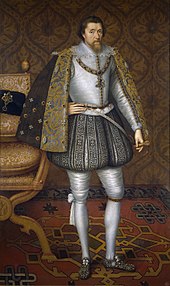
James I of England
(ruling 1603–13)
with a royal cross-framed armchair and standing on an
Oriental carpet
, by
Paul van Somer

Engraving of a sealing of Peter II, ca 1196—1213
In the 15th century, a characteristic
folding-chair
of both Italy and Spain was made
of numerous shaped cross-framed elements, joined to wooden members that rested
on the floor and further made rigid with a wooden back. 19th-century dealers and
collectors termed these “Dante
Chairs” or “Savonarola
Chairs“, with disregard to the centuries intervening between the two
figures. Examples of curule seats were redrawn from a 15th-century manuscript of
the Roman de Renaude de Montauban and published in Henry Shaw’s
Specimens of Ancient Furniture (1836).
The 15th or early 16th-century curule seat that survives at
York Minster
, originally entirely covered with
textiles, has rear members extended upwards to form a back, between which a rich
textile was stretched. The cross-framed armchair, no longer actually a folding
chair, continued to have regal connotations.
James I of England
was portrayed with such a
chair, its framing entirely covered with a richly patterned
silk damask
textile, with decorative nailing,
in
Paul van Somer
‘s portrait (illustration,
left). Similar early 17th-century cross-framed seats survive at
Knole
, perquisites from a royal event.
The form found its way into stylish but non-royal decoration in the
archaeological second phase of
neoclassicism
in the early 19th century. An
unusually early example of this revived form is provided by the large sets of
richly carved and gilded pliants (folding stools) forming part of long
sets with matching tabourets delivered in 1786 to the royal châteaux of
Compiègne
and
Fontainebleau
. With their Imperial Roman
connotations, the backless curule seats found their way into furnishings for
Napoleon, who moved some of the former royal pliants into his state
bedchamber at Fontainebleau. Further examples were ordered, in the newest Empire
taste:
Jacob-Desmalter
‘s seats with members in the
form of carved and gilded sheathed sabres were delivered to
Saint-Cloud
about 1805. Cross-framed
drawing-room chairs are illustrated in
Thomas Sheraton
‘s last production, The
Cabinet-Maker, Upholsterer and General Artist’s Encyclopaedia (1806), and in
Thomas Hope
‘s Household Furniture
(1807).
With the decline of archaeological neoclassicism, the curule chair
disappeared; it is not found among
Biedermeier
and other Late Classical furnishing
schemes.
Marcus
Julius Philippus or Philippus I Arabs (c. 204–249), known in
English
as Philip the Arab or formerly (prior to World War II) in
English as Philip the Arabian, was a
Roman
Emperor
from 244 to 249.
//
Little is known about Philip’s early life and political
career. He was born in
Shahba
, about
55 miles southeast of
Damascus
,
in the
Roman province
of
Syria
. Philip has the nickname “the Arab” because he had family who had
originated in the
Arabian peninsula
, believed to be distant descendants of the prestigious
Baleed family of Aleppo
. Philip was the son of a Julius Marinus, a local Roman citizen,
possibly of some importance. Many historians[1][2][3]
agree that he was of Arab descent who gained
Roman citizenship
through his father, a man of considerable influence. Many
citizens from the provinces took Roman names upon acquiring citizenship. This
makes tracing his Arabic blood line difficult. However, it is documented that
Rome used the
Ghassan
tribe from the
Azd of
Yemen
as vassals
to keep the neighboring northern Arabs in check.
The name of Philip’s mother is unknown, but sources refer to
a brother,
Gaius Julius Priscus
, a member of the
Praetorian guard
under
Gordian
III
(238–244). In 234, Philip married
Marcia Otacilia Severa
, daughter of a Roman Governor. They had two children:
a son named Marcus Julius Philippus Severus (Philippus
II) in 238 and according to numismatic evidence they had a daughter called
Julia Severa or Severina, whom the ancient Roman sources don’t mention.
Philip became a member of the
Pretorian Guard
during the reign of the emperor
Alexander Severus
, who was a Syrian. In ancient Rome the Pretorian Guard was
closely associated with the emperor, serving among other things as the emperor’s
bodyguard.
Political
career
In 243, during
Gordian
III
‘s campaign against
Shapur I
of
Persia, the
Praetorian prefect
Timesitheus
died under unclear circumstances. At the suggestion of his
brother Priscus, Philip became the new Praetorian prefect, with the intention
that the two brothers would control the young Emperor and rule the Roman world
as unofficial regents. Following a military defeat, Gordian III died in 244
under circumstances that are still debated. While some claim that Philip
conspired in his murder, other accounts (including one coming from the Persian
point of view) state that Gordian died in battle. Whatever the case, Philip
assumed the purple following Gordian’s death. According to Edward Gibbon:
His rise from so obscure a station to the first dignities
of the empire seems to prove that he was a bold and able leader. But his
boldness prompted him to aspire to the throne, and his abilities were
employed to supplant, not to serve, his indulgent master.
Philip was not willing to repeat the mistakes of previous
claimants, and was aware that he had to return to
Rome in order to
secure his position with the
senate
. He thus travelled west, after concluding a peace treaty with Shapur
I, and left his brother Priscus as extraordinary ruler of the Eastern provinces.
In Rome he was confirmed
Augustus
, and nominated his young son
Caesar
and heir.
Philip’s rule started with yet another
Germanic
incursion on the provinces of
Pannonia
and the Goths
invaded Moesia
(modern-day Serbia
and Bulgaria
)
in the Danube
frontier. They were finally defeated in the year 248, but the
legions
were not satisfied with the result, probably due to a low share of the plunder,
if any. Rebellion soon arose and
Tiberius
Claudius Pacatianus
was proclaimed emperor by the troops. The uprising was
crushed and Philip nominated
Gaius Messius
Quintus Decius
as governor of the province. Future events would prove this
to be a mistake. Pacatianus’ revolt was not the only threat to his rule: in the
East, Marcus Jotapianus
led another uprising in response to the oppressive rule of
Priscus
and the excessive taxation of the Eastern provinces. Two other
usurpers, Marcus Silbannacus
and
Sponsianus
,
are reported to have started rebellions without much success.
In April
A.D.
248 (April 1000
A.U.C.
), Philip had the honour of leading the celebrations of the one
thousandth birthday of Rome, which according to tradition was
founded
in 753 BC by
Romulus
. He combined the anniversary with the celebration of Rome’s alleged
tenth saeculum
.
According to contemporary accounts, the festivities were magnificent and
included spectacular games,
ludi saeculares
, and theatrical presentations throughout the city. In the
coliseum, more than 1,000 gladiators were killed along with hundreds of exotic
animals including hippos, leopards, lions, giraffes, and one rhinoceros.
The events were also celebrated in literature, with several publications,
including
Asinius Quadratus
‘s History of a Thousand Years, specially prepared
for the anniversary.
Despite the festive atmosphere, discontent in the legions was
growing. Decius
(249–251) was proclaimed Emperor by the Danubian armies in the spring of 249 and
immediately marched to Rome. Philip’s army met the usurper near modern
Verona
that summer. Decius won the battle and Philip was killed sometime in
September 249,
either in the fighting or assassinated by his own soldiers who were eager to
please the new ruler. Philip’s eleven-year-old son and heir may have been killed
with his father and Priscus disappeared without a trace.
Religious
beliefs
Some later traditions, first mentioned in the historian
Eusebius
in his
Ecclesiastical History
, held that Philip was the first
Christian
Roman emperor. This tradition seems to be based on reports in
Eusebius that Philip allegedly had once entered a Christian service on Easter,
after having been required by a bishop to confess his sins. Later versions
located this event in Antioch.
However, historians generally identify the later Emperor
Constantine, baptised on his deathbed, as the first Christian emperor, and
generally describe Philip’s adherence to Christianity as dubious, because
non-Christian writers do not mention the fact, and because throughout his reign,
Philip to all appearances (coinage, etc.) continued to follow the
state religion
.
Critics ascribe Eusebius’ claim as probably due to the tolerance Philip showed
towards Christians.
Saint Quirinus of Rome
was, according to a legendary account, the son of
Philip the Arab.
|









